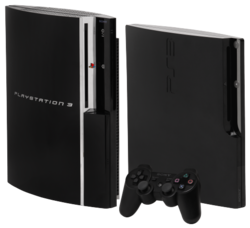| Hoover Dam | |
|---|---|
 Hoover Dam by Ansel Adams, 1942 | |
| Official name | Hoover Dam |
| Locale | Clark County, Nevada /Mohave County, Arizona,USA |
| Construction began | 1931 |
| Opening date | 1936 |
| Construction cost | $49 million |
| Owner(s) | United States Government |
| Dam and spillways | |
| Type of dam | Concrete gravity-arch |
| Height | 726.4 ft (221.4 m) |
| Length | 1,244 ft (379 m) |
| Crest width | 45 ft (14 m) |
| Base width | 660 ft (200 m) |
| Volume | 3,250,000 cu yd (2,480,000 m3) |
| Impounds | Colorado River |
| Type of spillway | 2 x controlled drum-gate |
| Spillway capacity | 400,000 cu ft/s (11,000 m3/s) |
| Reservoir | |
| Creates | Lake Mead |
| Capacity | 35.2 km3 (28,500,000 acre·ft) |
| Catchment area | 167,800 sq mi (435,000 km2) |
| Surface area | 247 sq mi (640 km2)[1] |
| Max. water depth | 590 ft (180 m) |
Hoover Dam, once known as Boulder Dam, is a concrete arch-gravity dam in the Black Canyon of the Colorado River, on the border between the US states of Arizona and Nevada. It was constructed between 1931 and 1936 during the Great Depression, and was dedicated on September 30, 1935, by President Franklin Roosevelt. Its construction was the result of a massive effort involving thousands of workers, and cost over one hundred lives.
Since about 1900, the Black Canyon and nearby Boulder Canyon had been investigated for their potential to support a dam that would control floods, provide irrigation water and producehydroelectric power. In 1928, Congress authorized the project. The winning bid to build the dam was submitted by a consortium called Six Companies, Inc., which began construction on the dam in early 1931. Such a large concrete structure had never been built before, and some of the techniques were unproven. The torrid summer weather and the lack of facilities near the site also presented difficulties. Nevertheless, Six Companies turned over the dam to the federal government on March 1, 1936, more than two years ahead of schedule.
Hoover Dam impounds Lake Mead, and is located near Boulder City, Nevada, a municipality originally constructed for workers on the construction project, about 25 mi (40 km) southeast of Las Vegas, Nevada. The dam's generators provide power for public and private utilities in Nevada, Arizona, and California. Hoover Dam is a major tourist attraction; nearly a million people tour the dam each year. Heavily travelled U.S. 93 ran along the dam's crest until October 2010, when the Hoover Dam Bypass opened.



